FALLOUT
Stories from Lost Pandemic Masks
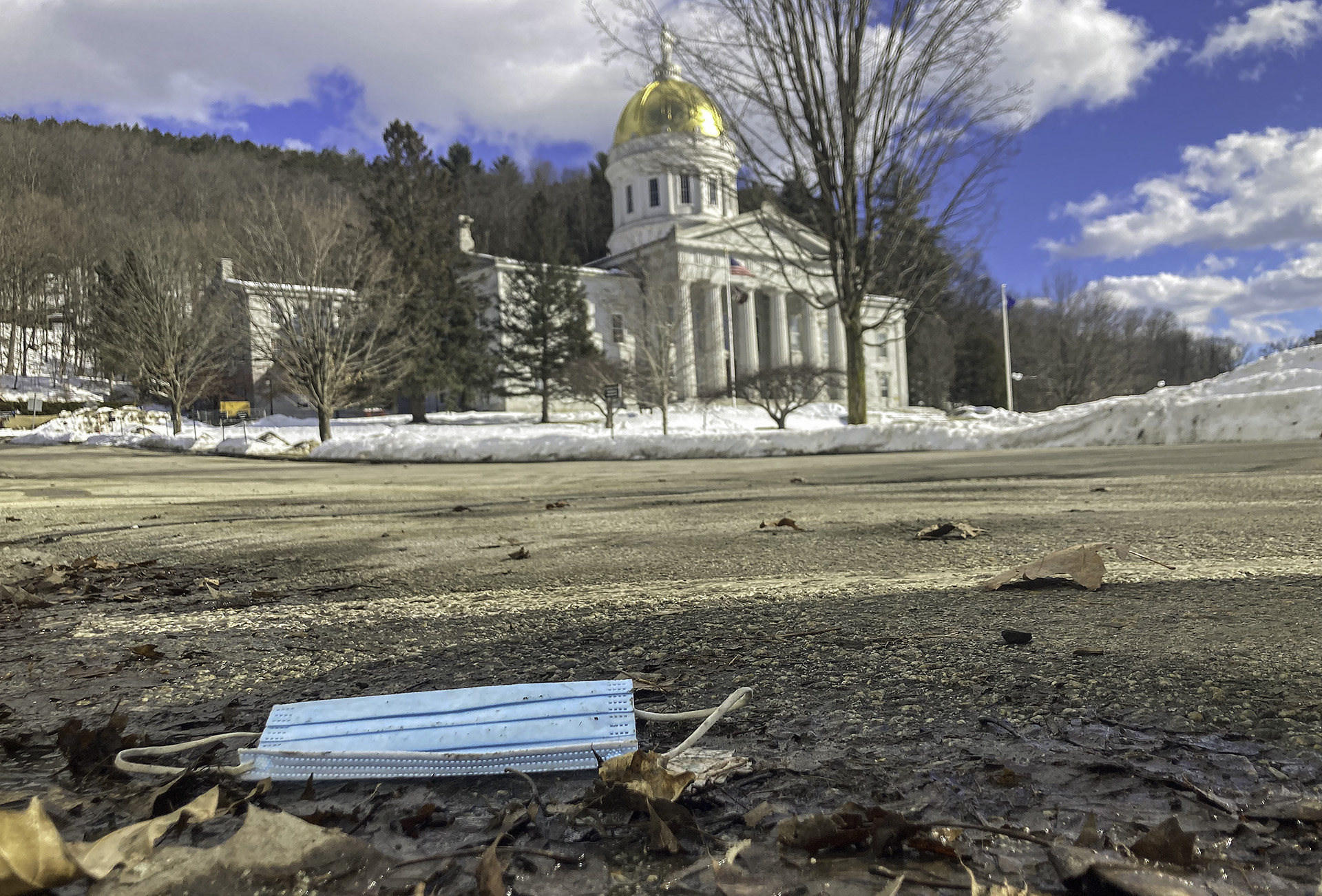
This essay and a lovely two-page photo spread (“double truck,” as we say in the trade) appear in the current issue of Seven Days.
Get your print edition most anywhere in Vermont.
Whether it is a token of virtue, a symbol of acquiescence or an expression of common sense, the pandemic mask is also a new form of litter.
Yet rarely do we pick one up — not in the same way we might take a plastic bottle from the trail or a candy wrapper off our front lawn. The mask we avoid like … well … you know.
The beer can, the cigarette butt, the apple core, the hypodermic needle — as litter each can be an expression of culture, intent and circumstance. Not so the pandemic mask. We do not cast it away with haste or indifference or disgust. The mask’s journey to earth is almost certainly accidental, regrettable.
Since autumn I’ve been photographing fallen masks around Montpelier and during my routine adventures in nature — watching birds and botanizing, for example, or contemplating the waves in the Gulf of Maine. Each mask tells a story or evokes in me some emotion.
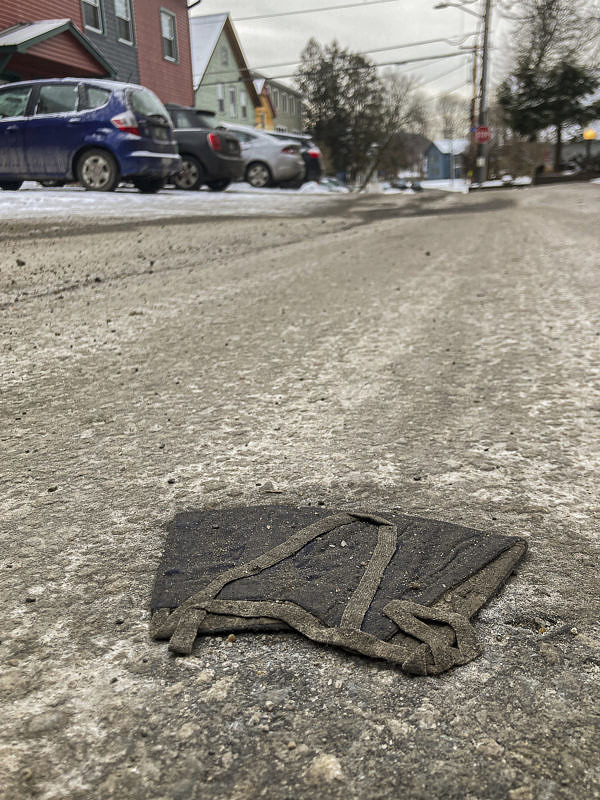 On Monhegan Island, Maine, a flower print mask lay on the trail. Did it belong to an artist visiting to paint the lighthouse or landscape? The medical mask beside Lake Champlain bore the impression of its wearer’s Roman nose. Did he wander off trail there as I had? And what about the psychedelic mask dangling beside a footbridge over the river in Montpelier? What brave soul hung it there, like a lost mitten, for the owner to retrieve?
On Monhegan Island, Maine, a flower print mask lay on the trail. Did it belong to an artist visiting to paint the lighthouse or landscape? The medical mask beside Lake Champlain bore the impression of its wearer’s Roman nose. Did he wander off trail there as I had? And what about the psychedelic mask dangling beside a footbridge over the river in Montpelier? What brave soul hung it there, like a lost mitten, for the owner to retrieve?
On the city’s streets and sidewalks, the stories seem more pointed. Which lawmaker or lobbyist might have dropped that medical mask near the Statehouse? Was the mask at rest in oak leaves outside my office one of mine? N95 masks are scarce among this litter; are their owners more careful not to lose them? And that black fabric mask, flattened like roadkill, soiled with winter salt and sand: well, I have no notion of its erstwhile owner, but for the mask itself I bear no sympathy whatsoever. None. Some masks are like that.
I’m not entirely sure why I photograph these masks — about three dozen so far. Maybe this is performance art. Maybe it’s little more than fuel for social media. Or maybe I’m seeking something more, some chronicle of us expressed in this fallout.
As if the lives it has taken aren’t terrible enough, the pandemic has also exposed and exploited our disunities. Masks are flimsy and potent symbols in the culture wars. Then again, so are debates about art and garbage.
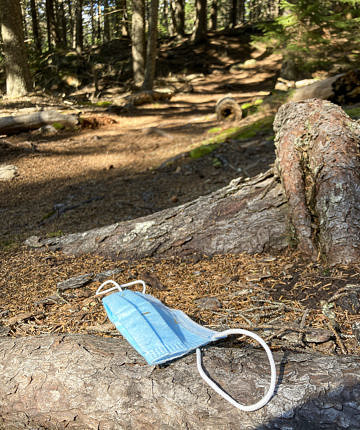
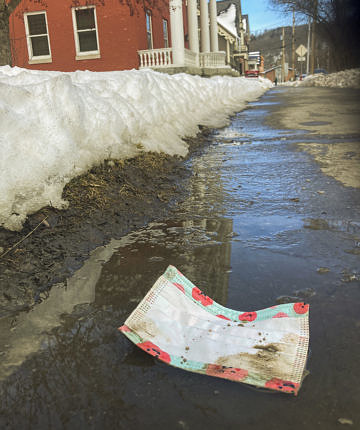
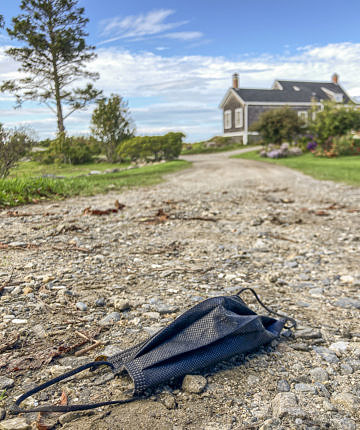
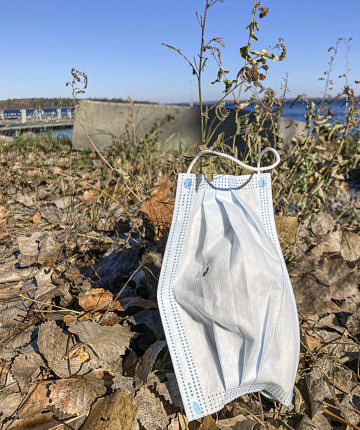
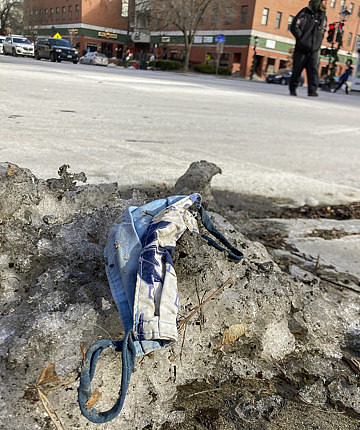
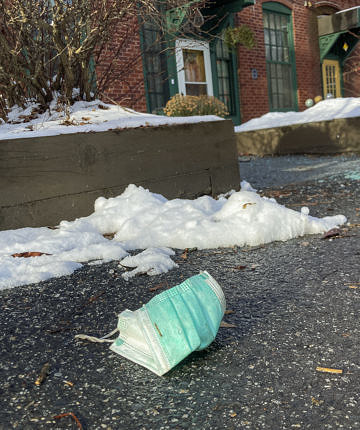
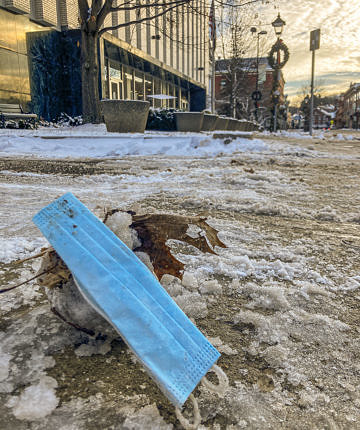
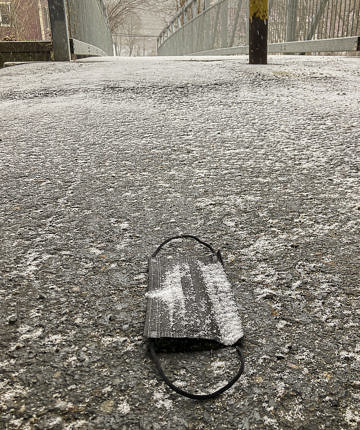
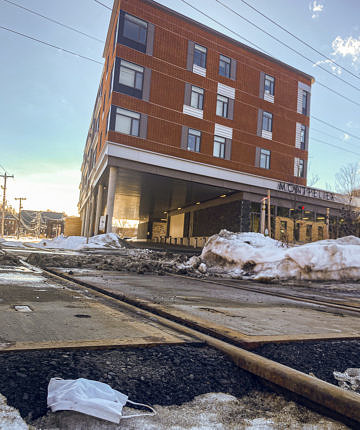
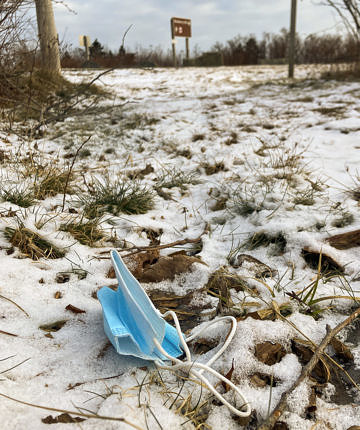
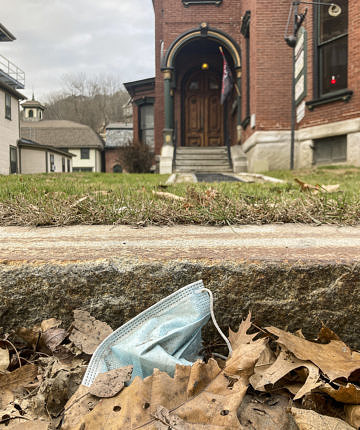
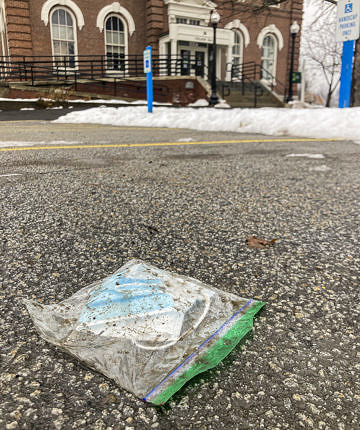
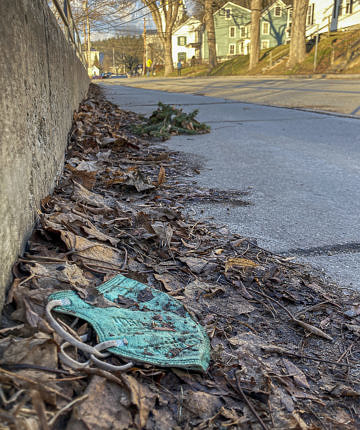
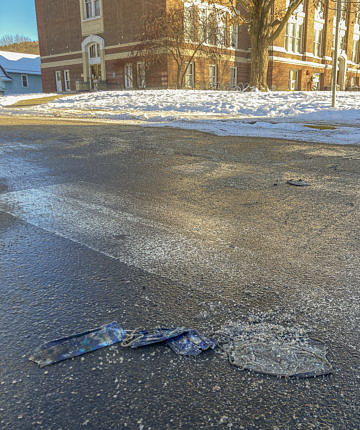
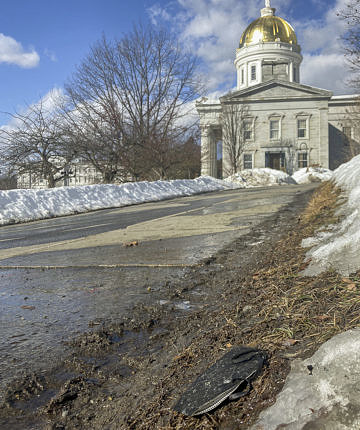
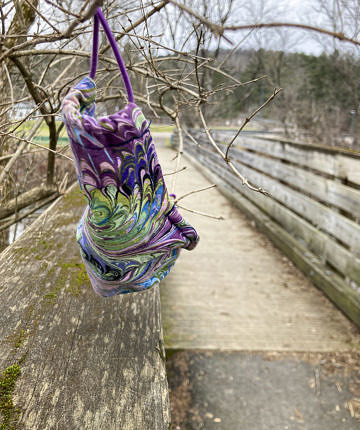
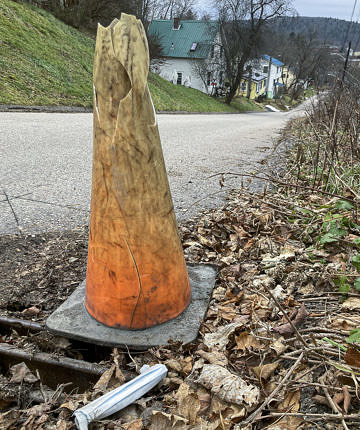
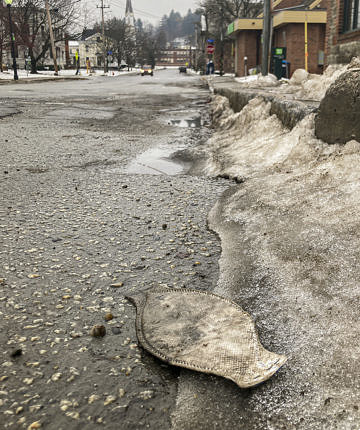
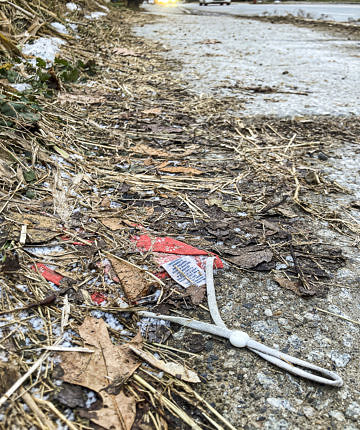
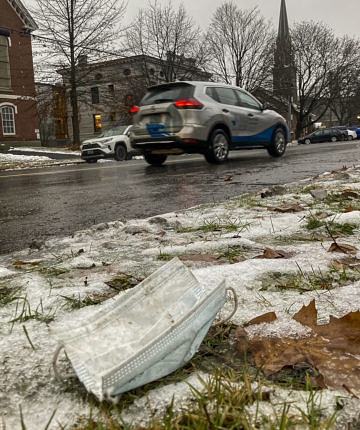
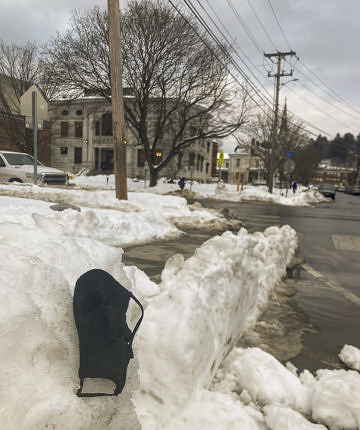
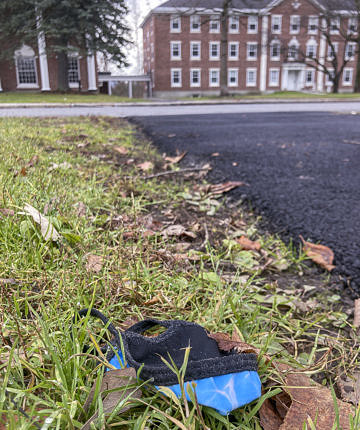
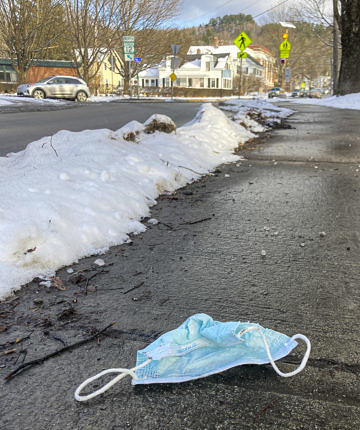
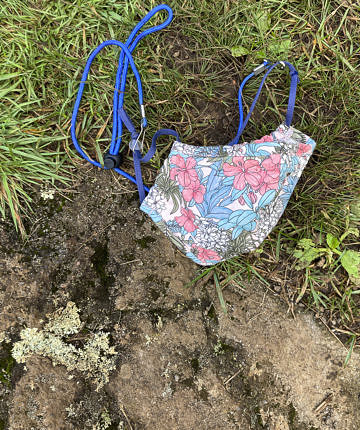
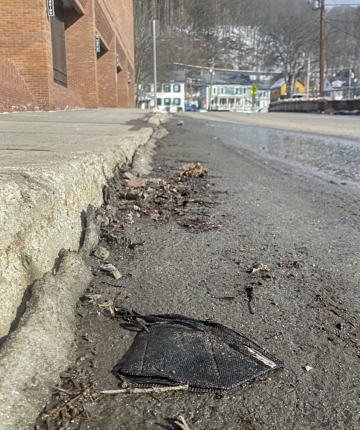
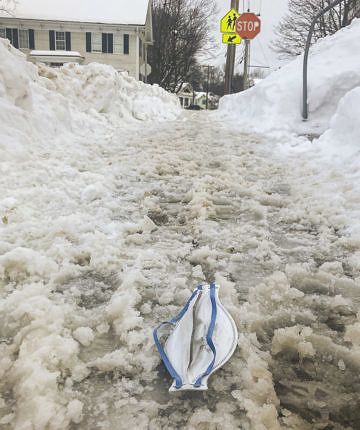
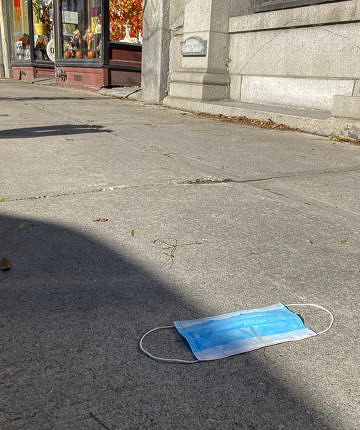
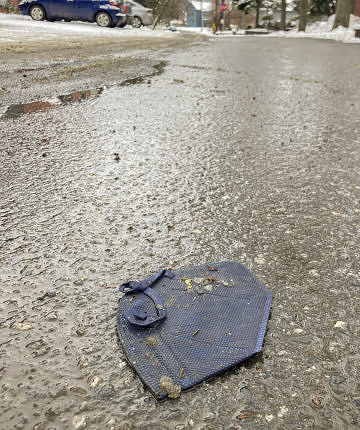
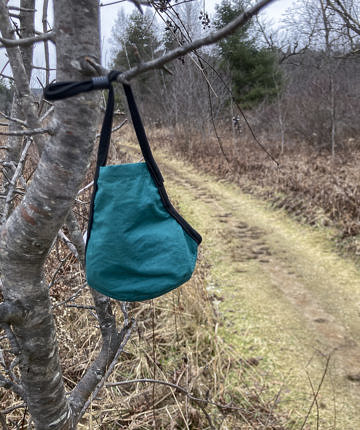
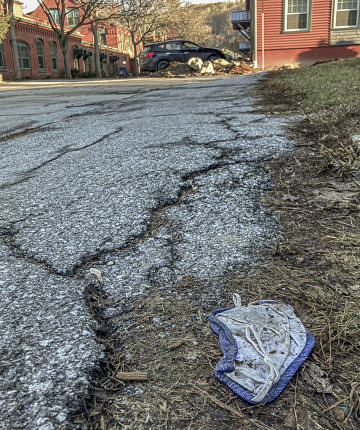

Bryan,
As always, very interesting to hear your musings about the life that goes on around us. And to see your photos, also. I like how these photos also have a great sampling of Vermont architecture and landmarks in the background! And now I’m going to think about picking up and throwing away some of these abandoned masks!
Cheers!
Dear Bryan – As usual, your commentary and visual observations are on point. I’ve often wondered about the discarded masks I see on sidewalks and roads. With most of my time spent walking on a private dirt road or two, I have not seen such a colorful and fascinating collection. Still, each time I shutter a little. Did the person have COVID and pulled if off to cough? It is more durable and more worrying than a discarded tissue. As you suggested, I avoid it like the COVID plague.
Mask straps are available, cheap, on Amazon. I picked some up for masks that had loose ear loops.
https://smile.amazon.com/dp/B09JLPLQY6?psc=1&ref=ppx_yo2_dt_b_product_details
Bryan, I prefer to view your beautiful photos of birds! I’m waiting for a time when parts of these discarded coverings (purposefully or not) will show up in bird nests, or in the beaks (or around the necks) of drowned waterfowl. The photos you present here are an important documentation of this pandemic. Working in healthcare, I wear these annoying things all day, and while I would never intentionally toss one to the ground, I have discovered a missing one or two that must have slipped out of my pocket. I echo Mike R’s sentiment that likely many (most) of these are unintentionally dropped. Maybe we need mask straps, like the ones that are used to keep glasses from being lost! As always, nice work.
Sad, mad, your photography brings some strong feelings! Thank you!
The first Earth Day rally, in April 1970, left a ton of litter on the Arts Quad of Cornell University. That’s what this album of littering masks reminds me of. I almost contributed to it the other day. I had several free N-95 masks, and I was trying to put one on, but the loops were supposed to go over my head, not my ears. I couldn’t get it on. The loops got caught in my gloves, my hair clips, my glasses … and the mask finally fell out of my hand and blew away in the parking lot. I put on my usual mask, completed my appointment, went back to my car, and found the mask in some muddy snow. Not one to litter, I picked it up and threw it out in the trash bag in my car. But if I hadn’t found it, someone would have wrinkled his or her nose in disgust at it. Litter is always jarring. Rarely is litter a message in a bottle. We must always pick it up. Perhaps your photographs will shame people into doing so.
I was hoping you had a shot of my favorite mask that I lost! I don’t think I dropped it outside, but I must have left it behind somewhere.
A sign of the times, or a sign of where we are headed as a society. When we stop caring about “our house” it’s only a short distance to where we care about nothing. When I drive the highways in my home state of Missouri I am sickened by the trash on the sides of the road. The US is becoming a third world country.
Bryan, your essay and photos: fine demonstration of one organism’s virulence to its host (Earth) in response to another organism’s virulence to humans. No winners.
I like your mention that each of the photos have a story to tell.
Thank you for an insight into how “mask art” and psychology reflect the times we are in. When I walk my dog (several times a day since we do not have a yard for him to run in) I’ve made it my personal mission to pick up the masks we find along the street and sidewalk by pulling off a few more of the biodegradable poop bags and scooping up masks along with Toby’s contributions. Works great and I get to feel momentarily virtuous.
I am sure that some of the masks are flung down on purpose. Lots of people are disgusted about the whole thing and, otherwise impotent, the only way they can express themselves is to fling and stomp. They might behave properly in the environments where they are required to wear a mask, but as soon as they get back outside, they toss the thing. A similar gesture occurs often with cigarettes. The most impressive butt-litter I’ve ever seen is a veritable dike around the perimeter of Rutland Hospital, which has plastered its grounds with banners proclaiming the virtue of nonsmoking. Well, everyone who is waiting and worrying outside the place steps to the perimeter and puffs away, then drops their butts for lack of any place to put them, if not in a gesture of contempt.
I loved you photos!
Cleaver idea , hope you picked them up
What a wonderful photo essay. Thank you for this. Images that raise more questions than they answer about ourselves, our society and the age we live in, that give rise to reflection and speak to our place in the world, images that do this with such poignant beauty… these images are truly art. I am moved.
#3–Horne’s Hill, thinks I. I like to think that many are unintentionally dropped out of pockets and cars rather than tossed away on purpose. It’s a common and safe practice not to wear a mask when outside and at a distance from others, so the mask goes halfway in a pocket—or slides out of the car with the human who has just shed it. My understanding is that the materials of which these non-fabric masks are made do not decompose well, or safely, and might eventually cause their own planetary health dilemmas. Always a pleasure to read your posts, Bryan.
They are literally everywhere, but I see them mostly in parking lots.
You know you’re in Vermont when the only one that’s been “rescued” by a passerby is the psychedelic one.
I have noticed many discarded masks &, like all litter, they make me sad. Like you, I haven’t felt inclined to pick them up. It troubles me that they’ve been discarded. I assume this means the discarder is, then, unmasked. I have thought of recording my sightings photographically, but have, largely, resisted since it seems negative to me. I did see one that struck me funny, though. The ear loop was hooked over a tree branch along a trail in my local park in line with a glove & a pile of aluminum can pop-tops like improvised blazes!
Great photos, Bryan. Living in NYC (until next week, when I move to Ithaca), I’ve seen lots of mask litter. Never thought to photograph them and I’m glad you did.
A new item in our visual lexicon and remains jarring for all the reasons you mention. Thank you for surfacing our mostly unspoken reactions.